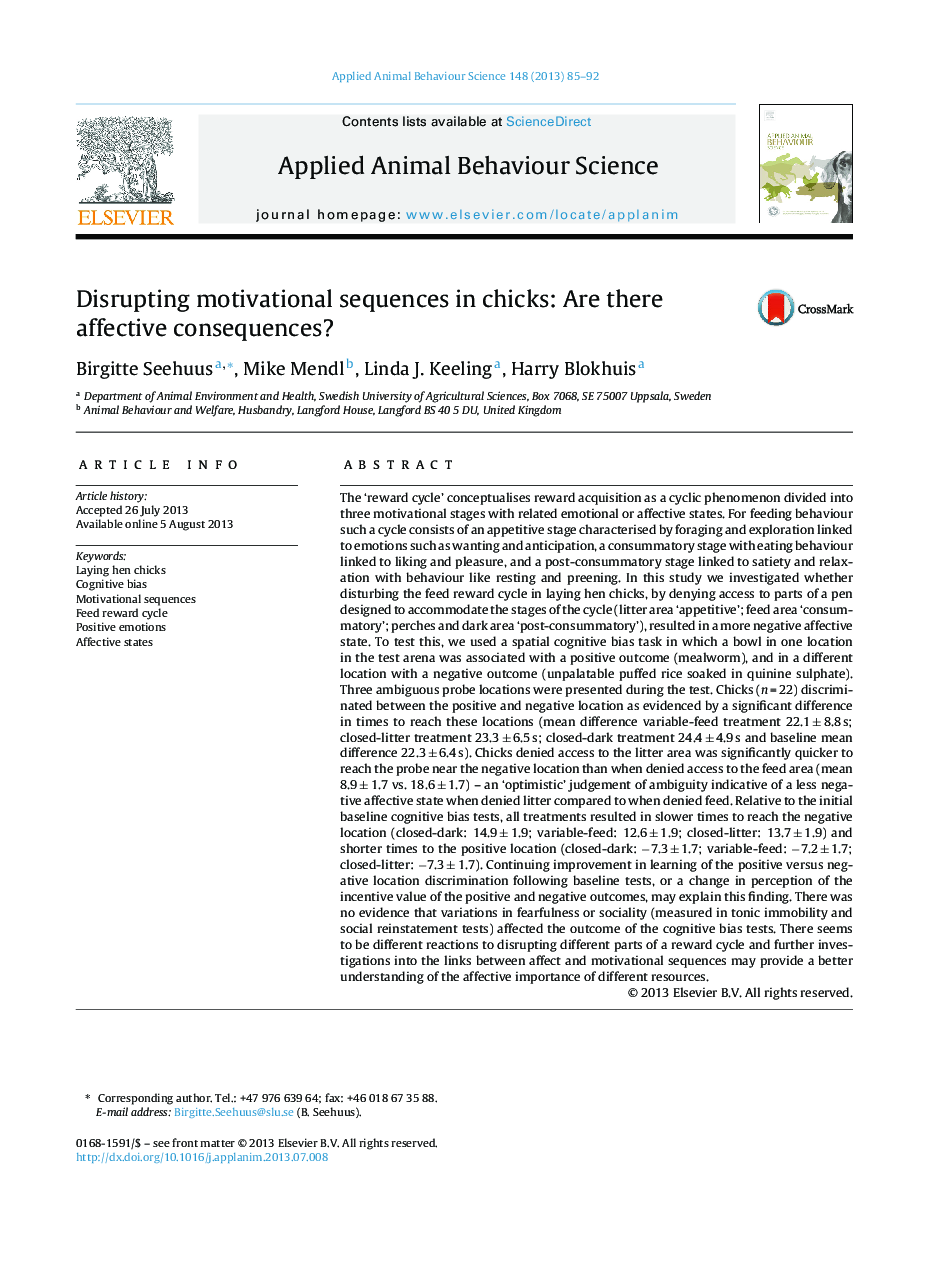| کد مقاله | کد نشریه | سال انتشار | مقاله انگلیسی | نسخه تمام متن |
|---|---|---|---|---|
| 4522698 | 1625359 | 2013 | 8 صفحه PDF | دانلود رایگان |

The ‘reward cycle’ conceptualises reward acquisition as a cyclic phenomenon divided into three motivational stages with related emotional or affective states. For feeding behaviour such a cycle consists of an appetitive stage characterised by foraging and exploration linked to emotions such as wanting and anticipation, a consummatory stage with eating behaviour linked to liking and pleasure, and a post-consummatory stage linked to satiety and relaxation with behaviour like resting and preening. In this study we investigated whether disturbing the feed reward cycle in laying hen chicks, by denying access to parts of a pen designed to accommodate the stages of the cycle (litter area ‘appetitive’; feed area ‘consummatory’; perches and dark area ‘post-consummatory’), resulted in a more negative affective state. To test this, we used a spatial cognitive bias task in which a bowl in one location in the test arena was associated with a positive outcome (mealworm), and in a different location with a negative outcome (unpalatable puffed rice soaked in quinine sulphate). Three ambiguous probe locations were presented during the test. Chicks (n = 22) discriminated between the positive and negative location as evidenced by a significant difference in times to reach these locations (mean difference variable-feed treatment 22.1 ± 8.8 s; closed-litter treatment 23.3 ± 6.5 s; closed-dark treatment 24.4 ± 4.9 s and baseline mean difference 22.3 ± 6.4 s). Chicks denied access to the litter area was significantly quicker to reach the probe near the negative location than when denied access to the feed area (mean 8.9 ± 1.7 vs. 18.6 ± 1.7) – an ‘optimistic’ judgement of ambiguity indicative of a less negative affective state when denied litter compared to when denied feed. Relative to the initial baseline cognitive bias tests, all treatments resulted in slower times to reach the negative location (closed-dark: 14.9 ± 1.9; variable-feed: 12.6 ± 1.9; closed-litter: 13.7 ± 1.9) and shorter times to the positive location (closed-dark: −7.3 ± 1.7; variable-feed: −7.2 ± 1.7; closed-litter: −7.3 ± 1.7). Continuing improvement in learning of the positive versus negative location discrimination following baseline tests, or a change in perception of the incentive value of the positive and negative outcomes, may explain this finding. There was no evidence that variations in fearfulness or sociality (measured in tonic immobility and social reinstatement tests) affected the outcome of the cognitive bias tests. There seems to be different reactions to disrupting different parts of a reward cycle and further investigations into the links between affect and motivational sequences may provide a better understanding of the affective importance of different resources.
Journal: Applied Animal Behaviour Science - Volume 148, Issues 1–2, September 2013, Pages 85–92